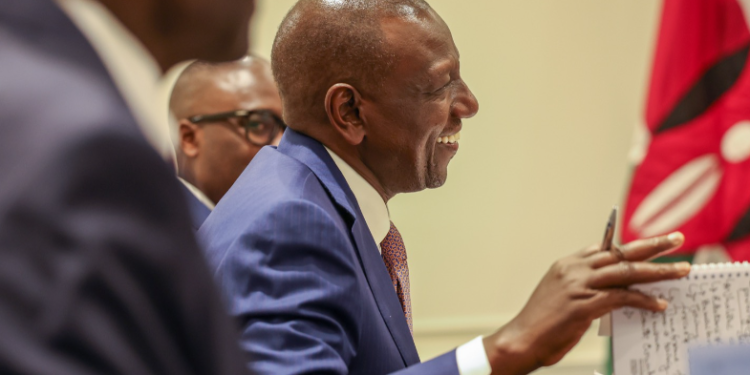President William Ruto has sustained push for debt restructuring for poor nations to promote meaningful development and support climate action initiatives.
According to the International Monetary Fund (IMF) data as of last month, 10 low-income countries were in debt distress, and 52 are at high and moderate risk of falling into distress.
Ruto noted that the 3.3 billion people in these countries are trapped in a vicious cycle of emergency responses, reconstruction, and recovery from more frequent climate shocks, which diverts resources away from both development and climate action and sucking vulnerable countries into a downward spiral of debt and environmental stress.
“The global community must therefore develop a debt restructuring initiative that does not wait for nations to plunge over the cliff before providing relief. Rather, the new sovereign debt architecture should extend the tenor of sovereign debt and provide a 10-year grace period,” he said.
“The second financing intervention relates to concessional financing. It is time to support international financial institutions to provide more concessional loans to the tune of $500 billion and to provide increased liquidity support through Special Drawing Rights (SDRs) with a minimum target of $650 billion. Access should be based on specific needs, not entitlement, and this necessitates changes to the allocation mechanism.”
Ruto called for an overhaul of the entire system of risk assessment and the opaque methodologies employed by credit rating agencies and risk analysis. “We must all recall the miscalculation of subprime mortgage risk by these agencies two decades ago, which precipitated a financial crisis whose effects reverberate to date, and ask the following question: On what basis should we believe that their methodologies are better at assessing risks in faraway frontier markets that are far more difficult to measure objectively, than in assessing the value of financial assets in the markets where they actually operate, and which they got so disastrously wrong.”
He urged investors to consider Africa underscoring opportunities in the continent. “Capital and technology can find no better returns anywhere, than the tremendous investment opportunity in Africa’s potential. Such investment would drive green growth creating jobs and wealth while decarbonising global production and consumption.”
“Further, the investments would also connect over 600 million people to clean electricity, provide clean cooking to about a billion people, finance green manufacturing including e-mobility, transform African agriculture and food systems including the manufacture of green fertiliser, process vast tonnage of the steel, aluminium and lithium required by new green industries, and enable our young people find the livelihoods they desire, at home, and reverse the tide of migration in the opposite direction.”
Kenya’s public debt rises to KSh 7.7 Trillion in June (kenyanwallstreet.com)




